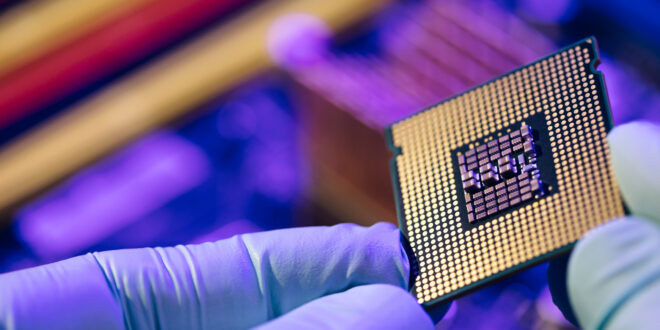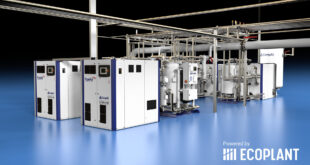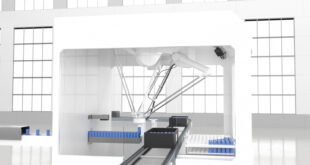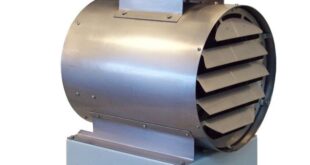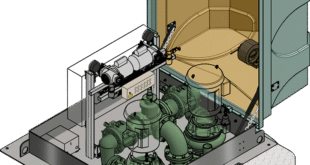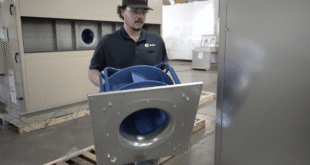Whether it’s helping doctors predict health outcomes, powering connected cars or optimising factory floors, AI is transforming the way industries work. But it can only deliver reliable, timely and secure insights if its processing location is matched to the right hardware. Here, Ross Turnbull explores how the choice of processing location and purpose-built hardware determines AI’s effectiveness, and how ASICs support real-time intelligence at the edge
AI adoption is accelerating across industries. According to Stanford University’s Human-Centred AI Index, 78% of organisations had integrated AI into daily operations in 2024, a 23% increase from the previous year. This growth is generating vast amounts of data from devices, sensors and systems, all of which must be processed efficiently to produce meaningful insights.
Effective processing is essential for AI to function as intended. Every algorithm, from simple threshold-based models to complex machine learning networks, requires hardware to execute calculations.
In the clouds or at the edge?
AI can be processed in two main environments: the cloud or at the edge. Cloud computing, powered by high-performance CPUs and GPUs, excels at training and running large-scale models. Aggregating vast datasets from thousands of devices enables industries to uncover insights and coordinate AI across sites and regions.
This makes the cloud indispensable for tasks that demand scale and computational depth, such as enterprise analytics, global logistics optimisation and research applications.
Edge AI, by contrast, is designed for small, latency-sensitive applications where immediate action is critical. Rather than sending raw data to the cloud, devices analyse information locally, reducing delay, easing network demands and keeping sensitive data on-device.
As edge AI is purpose-built and lightweight, it focuses on executing specific algorithms efficiently within the device’s own constraints. For example, a factory sensor might monitor vibrations to predict wear, while a wearable device could track vital signs in real-time. Driver-assist features in vehicles can also react within milliseconds.
The distinction between cloud and edge is not about superiority, but suitability. Cloud systems remain vital for scale, while edge devices support immediate, targeted decision-making. However, wherever AI runs, its performance depends on its hardware being well-matched to the task.
Processing intelligence
In the cloud, general-purpose CPUs and GPUs excel because they can process vast datasets, support complex model training and run a wide variety of algorithms. The scale and flexibility of these processors make them suitable for centralised computing, where energy, size and thermal constraints are less restrictive.
But at the edge, requirements are very different. Devices must respond in real-time while operating within strict limits on power, space and heat. This means that standard CPUs and GPUs are often too power-hungry or bulky to meet these demands efficiently.
Misaligned hardware can result in delayed responses, excessive energy consumption and potential security vulnerabilities, highlighting the need for processors specifically optimised for edge applications.
ASICs are better matched to meet the constraints of processing edge AI. This is because they are specifically designed for a particular application, combining sensor interfaces with lightweight AI processing in a single, optimised chip. Their architecture can include dedicated digital signal processing blocks, low-latency memory and optimised parallel computation paths to accelerate the precise calculations required, delivering fast, energy-efficient performance while keeping data local and secure.
This design makes ASICs ideal for practical edge applications. A factory sensor can analyse vibration patterns on the spot to detect early signs of mechanical wear. A wearable device can process heart rate or oxygen levels in real-time and trigger instant alerts. Driver-assist systems in vehicles can interpret sensor data and react within milliseconds, relying on the ASIC to execute the targeted algorithms required for each task.
AI can only deliver reliable, timely and secure insights when its processing matches the right hardware and environment. Cloud CPUs and GPUs excel for large-scale, data-intensive tasks, while ASICs provide purpose-built, efficient computation for real-time, local decision-making at the edge. However, it is in combining these strengths that organisations can truly unlock AI’s full potential.
Ross Turnbull Director of Business Development at application-specific integrated circuit (ASIC) manufacturer Swindon Silicon Systems.
 Engineer News Network The ultimate online news and information resource for today’s engineer
Engineer News Network The ultimate online news and information resource for today’s engineer
